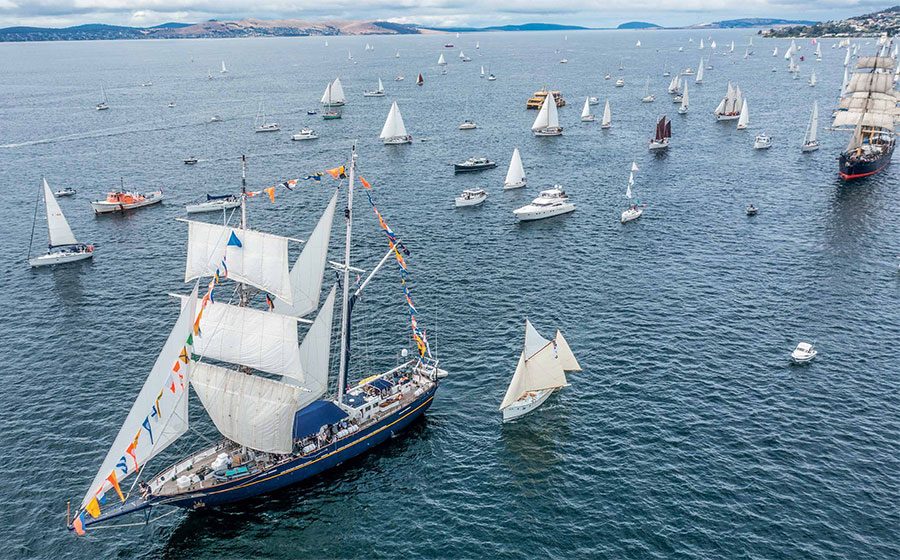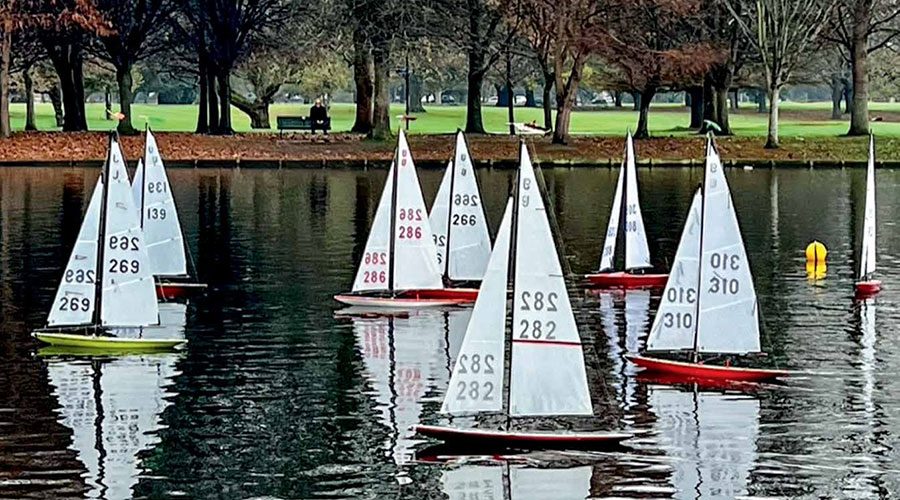

There’s been a lot happening in the biosecurity space in New Zealand recently, with many Kiwi boaters feeling like they are on the frontline, writes John Eichelsheim.
New, tougher legislation around biofouling has impacted boat owners and operators of marinas and hardstands alike. (See Guidelines.) The latter are obliged to ensure their facilities meet environmental standards, while among some boat owners there is a perception that hardstand capacity is reducing just when the new regulations have boosted demand for hull cleaning.
Biofouling legislation has put increasing pressure on boat owners to ensure their hulls are clean before travelling from place to place. Many regions/regional councils, such as Northland and the Marlborough Sounds, now have strict biofouling standards for boats entering their waters.

The tricky thing is that there is not one national set of biofouling rules for boaties to follow, with each region taking its own approach – and many marinas have even stricter standards. That means boat owners must note the biofouling regulations for their region, or the one they are travelling to, as well as the marina they intend to use.
Increasing emphasis on clean bottoms has put pressure on boat owners to comply, which in turn has boosted demand for haul-out and hardstand facilities, just when advocacy groups such as the Auckland Yacht & Boating Association (AYBA) are protesting the recent closure of several such facilities, including Auckland’s The Landing in Okahu Bay, Little Shoal Bay and Pier 21.
AYBA asserts there is now too little haul-out and hardstand capacity, particularly in Auckland, for recreational vessels to meet their obligations under New Zealand’s biosecurity regulations. They, and many other concerned Auckland boaters, question the wisdom of proposed apartment developments on sites such as Bayswater Marina, for instance, which could potentially offer hardstand areas in future.

So, is Auckland’s boating community lacking hardstand and haul-out options? Well, not really, according to New Zealand Marina Operators Association, which represents commercial haul-out, dry stand and marina facilities around New Zealand.
Representatives from Auckland boatyards and haulout facilities, all members of NZMOA, told Boating that, despite 6000m2 having been lost with the Pier 21 and The Landing closures, there has in fact been a fourfold increase in hardstand capacity.
In recent years boatyards and marinas in Auckland have invested heavily in infrastructure, including hardstand and haul-out facilities, they said, to the tune of around half a billion dollars. Investment is ongoing. Rather than a net loss, there has in fact been a net gain in hardstand area of around 25,000m2, a good proportion of it now undercover.
The same is true of haul-out facilities. While Auckland lost a travel lift at Pier 21, Half Moon Bay Marina now has two, Orams Marine three, and Tamaki Marine Park has two new haul-out trailers for vessels up to 30m. Gulf Harbour Marina has also invested in new equipment and processes, as has Westhaven Marina, making their businesses more efficient and increasing their overall capacity.

In addition to such large commercial operations, there are private slipways and club operated facilities throughout the Auckland region. Boat club members can make use of club facilities where available, usually for a very reasonable fees – another good reason to join and support your local boat club.
“Very few cities in the world have the sort of marine facilities Auckland offers – facilities that are front and centre in a major city. Provided every boat owner in the region doesn’t try and slip their boats all at once in the weeks before Christmas, there’s ample capacity to service the whole fleet,” said one NZMOA member.
All this investment by NZMOA has been undertaken in response to growing demand for marine services, but also in part to meet ever more stringent Health and Safety and environmental demands from central and local government.
We asked Chris Galbraith, Chair at the New Zealand Marina Operators Association, for his comments:
“The industry has achieved a huge amount over the last 10 years or so to meet the increasing demand for haul-out space. This demand is due to biosecurity requirements, but also growth of the fleet, in particular the trend towards bigger boats and multihulls.
“While there is a baseline of capacity required to serve the fleet, more capacity is not the only solution. Spreading demand across the year is also one part of the solution. New technology, like biofouling coatings that are coming on the market, and even methods of keeping marina infrastructure cleaner so it doesn’t reinfect boats, also have a lot of potential.

“We have seen huge investment in the creation of new capacity. This includes the Half Moon Bay expansion, investment at Gulf Harbour Marina’s Boatyard, the improved Floating Dock at Westhaven, the new Tamaki Marine Park which is great for powerboats, and major investment at Orams Marine, which lifts 850-1000 recreational boats a year.
“In the regions, we’ve seen new facilities at Marsden Cove and Vessel Works in Tauranga, a major investment in Bay of Islands Marina’s Boatyard and new facilities being built in Whakatane, Whanganui and Nelson that will particularly assist the commercial fleet.”
Commercial marinas and haul-out facilities must meet strict regulations about the capture and proper disposal of biofouling, paint, antifoul material and dust. Facilities such as Half Moon Bay Marina and Tamaki Marine Park follow strict work protocols and undergo regular water quality testing to ensure they comply.
And these regulations apply everywhere with local authorities around the country working with smaller facilities and boating clubs to help them implement better environmental and biosecurity protocols.
“The challenges we are facing in New Zealand are global challenges, and as an industry, we are very good at and finding ways to innovate and solve problems.
“Marinas and boatyards serve as an environmental gateway. It is their job to make sure the impact of vessels, whether through biofouling, maintenance, or waste discharge, is minimised. New Zealand has been particularly innovative in this area.
Good haul-outs and boatyards capture and treat all byproducts of the maintenance process to prevent toxins and chemicals from entering waterways,” Galbraith wrote.
The days of beaching the boat to scrape it clean or apply antifoul are long gone – such an environmentally damaging practice is now illegal, and rightly so. But of course, commercial marina, hardstand and haul-out facilities are businesses for which proper compliance with environmental and biosecurity regulations comes at a cost, part of which is necessarily passed on to customers. While this may upset some members of the boating fraternity, for most, paying the price to meet their environmental and biosecurity obligations is just another aspect of boat ownership.
Caulperpa
Regarding Caulerpa, Biosecurity New Zealand explain the main point regarding this invasive seaweed is to check anchors, chains and fishing gear in case there’s weed on board. If you see any seaweed on your equipment, chuck it straight back in the area it came from. That way, you don’t have to be an expert at identifying Caulerpa and you’ll avoid taking it to a new location.

There are also anchoring restrictions in place. This is still an evolving situation, and the rules are changing, so Biosecurity NZ suggest you check up on before you head off: If you are visiting Aotea Great Barrier or Ahuahu Great Mercury Island please make sure you know the locations where Caulerpa has been found and that you are clear on the rules before you go.
Exotic Caulerpa was also found in Northland in May this year.
Visit biosecurity.govt.nz/Caulerpa
www.marinepests.nz
Levels of fouling
Biosecurity NZ has classified six levels of hull biofouling ranging from zero to five. called the LoF scale. Categories are based on the amount of biofouling you can see on a vessel’s submerged surfaces. It is a straightforward method for consistent scoring of vessel biofouling that can be related to biosecurity risk.
www.biosecurity-toolbox.org.nz/wp-content/uploads/sites/176/2020/08/LoF-guidance-and-schematics-2019_ACCawthron.pdf
Boaters and biofouling: GUIDELINES
Biosecurity New Zealand is targeting two pathways that marine pests can travel on, which various regions around New Zealand support each in their own way.
Until the arrival of exotic seaweed Caulerpa, the main concern was marine pests like Mediterranean fanworm and Undaria that travel on biofouling. With the arrival of Caulerpa, there is now also a focus on stopping the spread of this invasive seaweed which travels as small fragments on equipment like anchors and fishing gear.
Biosecurity New Zealand supplied Boating NZ with the flowing guidelines for boaters:
• If you are cruising anywhere in the country, also make sure you have noted the biofouling rules for the region. These are published on the council websites and are listed on marinepests.nz.
• The strictest rules are in place in Auckland, which requires you to maintain a clean hull (Level of Fouling 2 or less) at all times. In Northland and Bay of Plenty, you need to meet this standard any time your vessel is moving. If in a region where rules aren’t in place, it’s still a great idea to have a clean boat free of biofouling. You’ll get more fuel efficiency and performance too. Note that some regions also have rules prohibiting transporting specific marine pests.
• Many marinas, including those in Northland, the Coromandel and Marlborough Sounds, ask you to take a little extra care as they observe the ‘6 or 1’ rule. This means either an antifoul within the previous six months, or a lift-and-wash within one month of leaving an area infected with marine pests. We recommend you check in with the marina operator before you arrive, to make sure you have everything you need. Receipts, photos and videos from your latest clean is handy evidence to prove that no pests are onboard.
• Always check council rules before you clean in the water. Many marinas also prohibit in-water cleaning for environmental and safety reasons. If you are cleaning in-water, only use a soft cloth. Never cause damage to the paint. Do it before you leave your mooring or berth so that you don’t carry marine pests with you. Tidal grids are convenient for some jobs but they are not suitable for hull cleaning or antifouling because antifoul doesn’t have time to cure between tidal cycles, and also because scraping releases contaminants, including heavy metals and pests, into the water. Best practice is an approved haulout facility instead where waste is captured and treated to protect our environment.





